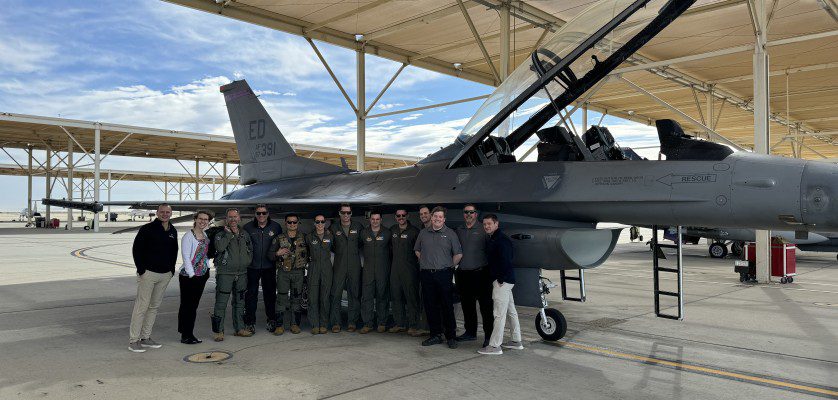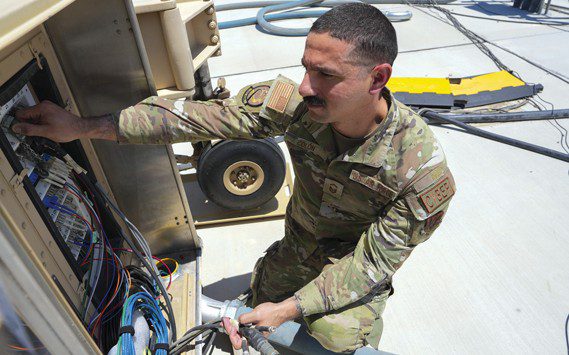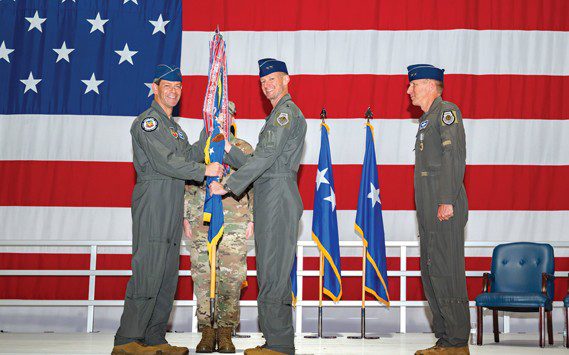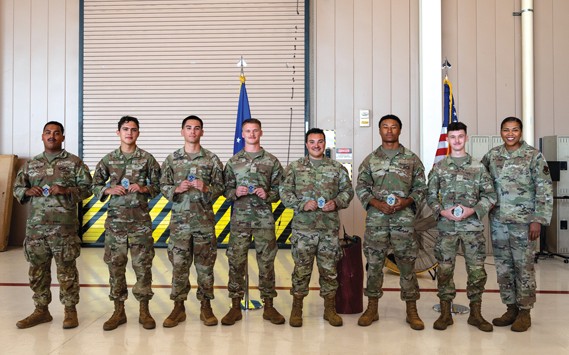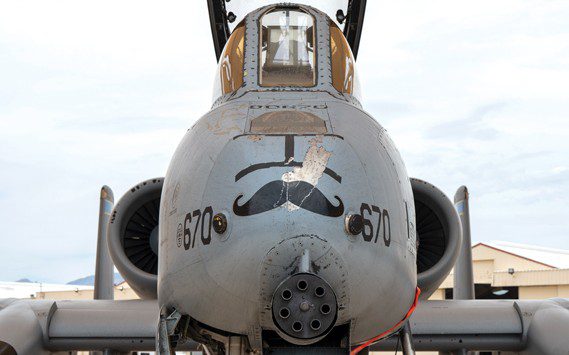An Air Force Research Laboratory-developed physiological monitoring system for pilots completed a series of F-16 flight tests March 4-17, 2024, at the U.S. Air Force Test Pilot School at Edwards Air Force Base, Calif.
The 422d Test and Evaluation Squadron also completed flight tests on the system in January and February 2024 at Nellis Air Force Base, Nev.
Six TPS student test pilots and engineers used the Integrated Cockpit Sensing, or ICS, system inside the F-16 to collect data for their capstone test management project. The ICS system, developed by AFRL’s 711th Human Performance Wing, Human Effectiveness Directorate, fuses sensors that collect physiologic markers from pilots during flight.
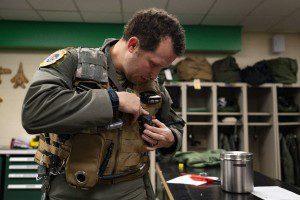
“It aggregates measures of oxygen being provided to the brain, heart rate, respiration rate [and] skin temperature, basically a bunch of markers that provide context and help us understand how the pilot is responding to what he or she is asked to do,” said Chris Dooley, lead ICS engineer, AFRL Human Effectiveness Directorate. “This data helps us look at risks such as hypoxia and cabin depressurization as well as stress responses to different phases of flight.”
The TPS students partnered with the ICS team to translate customer requirements into test objectives, ultimately developing and executing a comprehensive flight test project.
“We wanted to be able to help the ICS team accelerate their technology through flight tests,” said Wei “Fug” Lee, TPS director of research and the lead adviser for this project. “The goal is to demonstrate the ICS’s ability to measure physio and environmental data and assess its utility in recognizing physiological insults. The team broke the plan into several specific test objectives to characterize the system’s accuracy in measuring aircraft state data.”
The tests also examined the relationship between physiological parameters, cognitive performance and flying performance.
ICS is a valuable tool for research since it measures physiological and environmental parameters during flight operations and identifies normal measures versus problematic ones, said Capt. Tyler Morris, student flight test engineer and project lead.
“Initial testing has shown that the ICS has the ability to detect certain oxygen system malfunctions and the planned development of integrating an alerting system may prove to be critical in keeping aircrew safe,” Morris said.
In one test, the students intentionally swapped to an oxygen mask with a faulty inhalation valve, increasing exhalation resistance, while in another, they temporarily disconnected the oxygen supply while a copilot had control of the aircraft. ICS detected the issue in both instances.
Dooley, who traveled to California to assist with the flight tests, said ICS’s journey from idea to prototype to flight test took roughly four years. Recent successes include the system receiving approval from Air Combat Command to fly on the F-16 and the military flight release for testing from the F-16 System Program Office, or SPO.
The idea for ICS came from the need for an in-flight platform that would merge sensors and data in real time and provide that feedback to pilots. Prior to ICS, investigators merged existing data from sensors after incidents to determine what went wrong.
“We needed the ability to really investigate and then interrogate it on the back end to understand how we can improve safety for pilots as well as enhance mission effectiveness,” Dooley said.
In 2019, AFRL analyzed available commercial sensors and then identified the ones most suitable for the flight environment. Afterward, the team assembled those sensors, built the processes and designed the actual system.
AFRL scientists and engineers worked with BAE Systems (formerly Ball Aerospace) contractors on building software and hardware, as well as resolving data access issues. The team also addressed design features to make the system more acceptable to pilots.
What the team ultimately created is a system with helmet-based, base layer and life-support sensing that provides physiological data in a single package, ensuring holistic information on the pilot and operating environment during flight, Dooley said.
With the initial prototype ready in 2022, AFRL traveled to various SPOs to get the approval to fly the ICS. The team completed airworthiness tests including explosive decompression, rapid decompression, wind blast, manned and unmanned testing in the centrifuge and altitude chambers as well as electromagnetic interference and susceptibility tests, all ensuring the system would be safe and effective for pilots to use on aircraft.
In 2023, the F-16 SPO issued ICS its military flight release, agreeing that the system was safe and effective to fly on the F-16. Next, the team went to AFRL’s Technical Board and Safety Review Board to receive the approvals to proceed to flight tests.
After communications with the commander of the 59th Test and Evaluation Squadron, the 422nd TES became the first unit to flight test the ICS. Four F-16 pilots completed a series of flight tests in Nevada in early 2024.
“The ICS test is a product of the relationship between AFRL’s 711th Human Performance Wing, the 59th and 422nd Test and Evaluation Squadrons to be the operational test arm for human performance programs before they go to the Combat Air Forces, same as we do for jet systems and weapons,” said Lt. Col. Robert “SWAG” Russell, squadron commander, 422nd TES. “It’s a relationship we’ve been building with the Aerospace Medical Association and AFRL for years.”
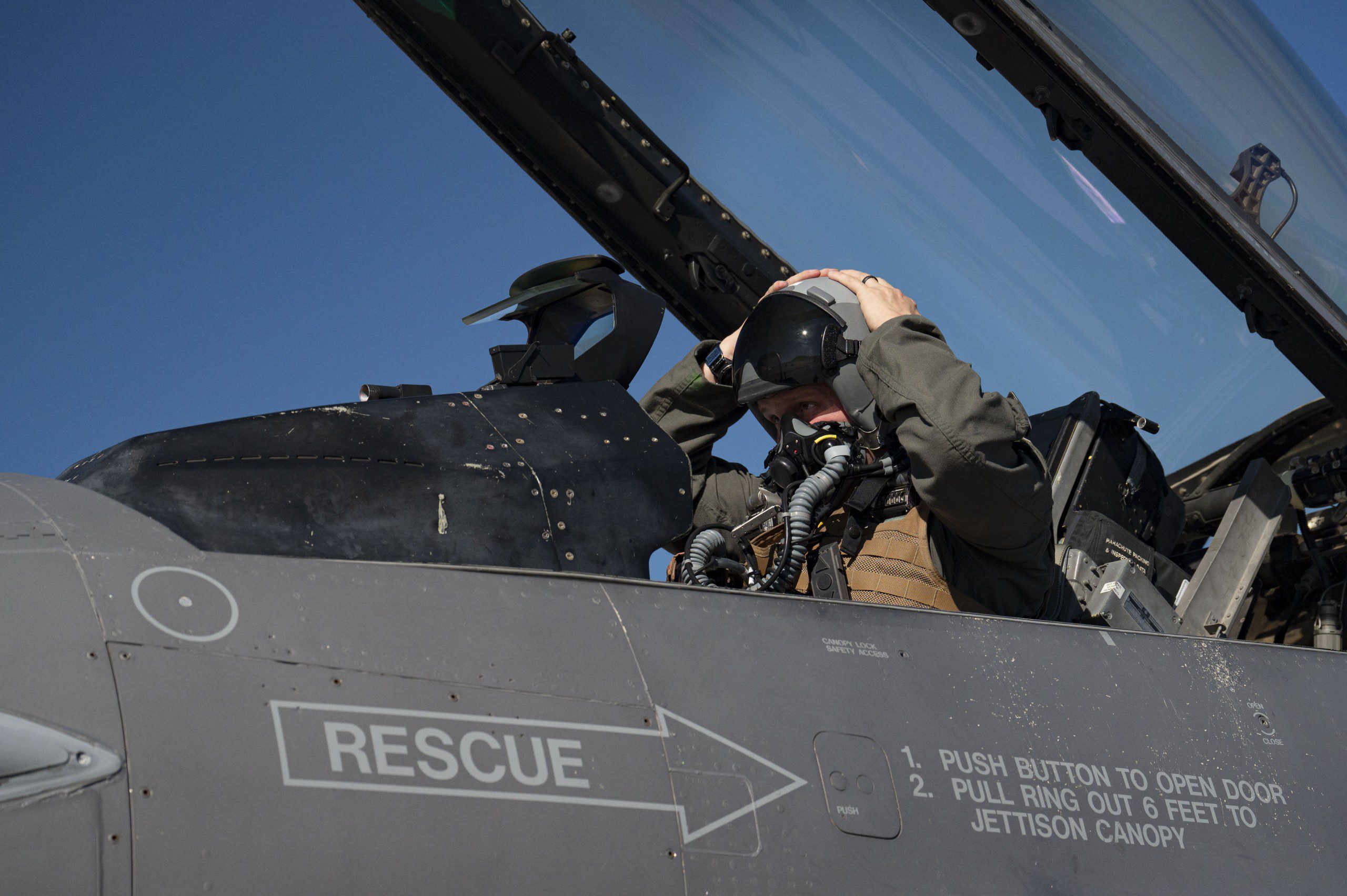
He noted that the flight test community has been involved with the ICS program since 2020 following a recommendation made by the National Commission on Military Aviation Safety to proactively monitor aircrew physiology.
“This recommendation was borne out of a rash of fatal mishaps where pilots likely lost consciousness while flying, possibly due to oxygen starvation,” Russell said. “There are a lot of qualifiers like ‘likely’ and ‘possibly’ because while we collect millions of data points on the airplanes we fly, we monitor and collect zero data on pilots.”
The data collected by ICS aims to protect pilots by issuing a warning if certain measures like blood oxygen levels are problematic. Therefore, gaining pilots’ acceptance of the system is important, Russell said, an assertion echoed by engineers.
“Aircrew flight equipment shops have been invaluable sources of information for getting everything up in the air and flying and figuring out how we can modify it, so it best integrates into pilots’ equipment,” Dooley said. “Even down to the ergonomics of how this is going to plug into this without interfering with the jet and with the pilot’s ability of doing his or her job.”
Following the tests at Nellis and Edwards, Dooley said AFRL will compile the feedback received from pilots, take those lessons learned and apply them to the system. Ultimately, AFRL plans to work with other SPOs and program offices and wants to test ICS on additional platforms. The team also hopes to eventually connect ICS to the aircraft itself to enable proactive safety measures in the case of incapacitated pilots.
“Our team’s work is about ensuring the cockpit environment they’re operating in is safe so pilots can complete the mission and come home safely,” Dooley said. “There’s a lot of possibility with this system. ICS produces a very rich data set that doesn’t exist anywhere else in the world.”
Teammates from AFRL and TPS said both organizations and the Department of the Air Force benefitted from this experience.
“TPS gets a cool project and our partners in this case, the ICS team, get an accelerated flight test,” Lee said. “It’s just a mutually beneficial, win-win situation.”






